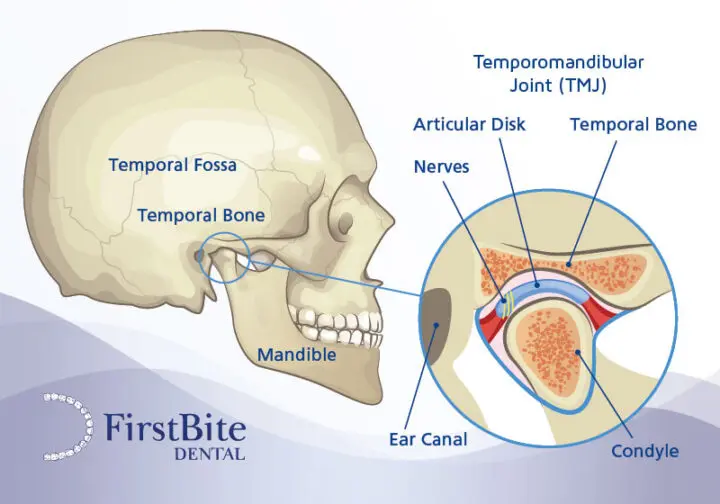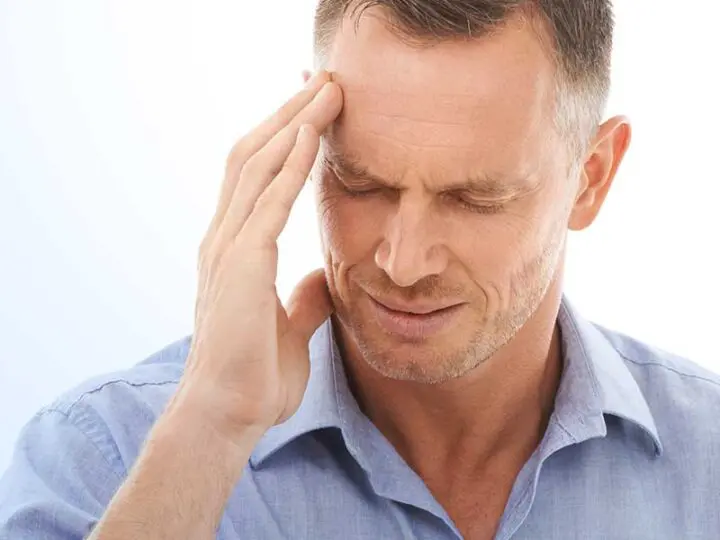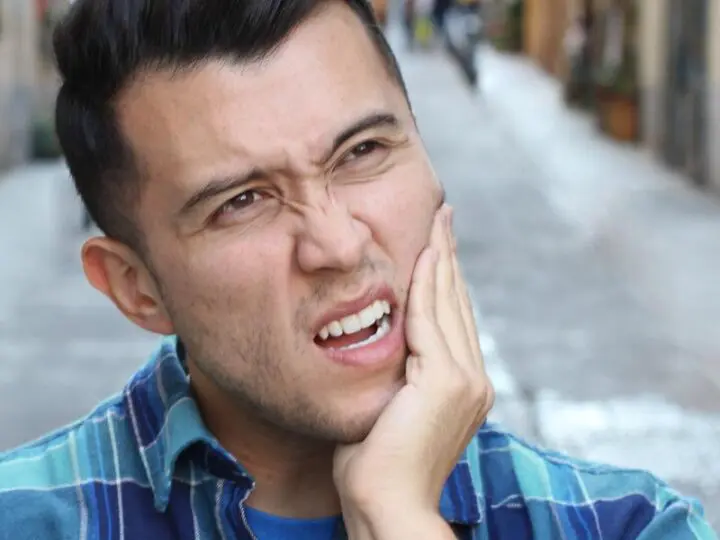Melbourne TMD Treatment (or TMJ Dysfunction Treatment) at our Essendon dental clinic
The temporomandibular joint (TMJ), commonly known as the jaw joint, is where the lower jaw connects to the base of the skull. The position of this joint is just in front of your ears, and you can feel it by opening and closing your jaw while gently pressing this position.
Our dental clinic in Essendon, Melbourne, is seeing an increasing number of patients seeking treatment for TMJ dysfunction. This is due to our dentists, led by Dr Agim Hymer, having extensive experience and expertise in managing TMJ disorders.

What is TMD (TMJ Dysfunction)?
Temporomandibular Joint Dysfunction (TMD), also known as TMJ Disorder, refers to conditions affecting the jaw joint (TMJ) and the muscles that control jaw movement.
This small but complex joint connects your lower jaw to your skull. It is responsible for everyday actions such as chewing, speaking and yawning. When the TMJ becomes misaligned, inflamed, or strained, it can lead to a wide range of symptoms – from jaw pain and clicking to headaches, facial discomfort and even neck and back pain.
A range of issues can cause TMD, and it often develops gradually. We will diagnose and manage TMD using a holistic, step-by-step approach that targets the root cause of your symptoms and provides long-term relief.
What are the symptoms of TMJ Dysfunction?
Symptoms may include one or more of the following:
- Sore jaws
- Toothaches
- Sinus problems
- Neck and back pain
- Ear aches and ringing ears
- Headaches and migraines
- The teeth of both jaws do not feel like they are biting properly
- Pain when chewing or yawning
- Limited opening of the jaws
- Pain on opening or closing of the jaw
- Facial tension
- Clicking jaw (disc rubs on the bone)
- Lockjaw (locked jaw).


What causes TMD?
The causes of TMD are also numerous, with one or more of the following causes being responsible:
- Ear infections
- Injuries to the jaw joint
- Autoimmune disorders, such as osteoarthritis or rheumatoid arthritis
- Dental fillings not properly adjusted
- Bruxism (grinding and or clenching of the teeth)
- Stress: emotional and/or physical
- Bad occlusion
- Anatomical deformities.
How is TMD diagnosed?
Diagnosis of TMD can be difficult due to its numerous causes and symptoms. Our dentists will systematically rule out possible causes before we commence your treatment. We usually coordinate with other healthcare professionals to prepare a treatment plan so that all aspects of the problem, whether physical/or emotional, are dealt with.
We will often refer you to a general medical practitioner to exclude specific issues as a medical problem if they do not appear to be dental problems.

TMJ Dysfunction Treatment Process
Suppose symptoms are acute (excruciating or the jaw can’t open). These will be dealt with immediately using medication, an occlusal splint (see below), and/or physiotherapy. After dealing with the acute symptoms, the patient is treated as a chronic (long-term, non-severe) sufferer.
The following steps are usually followed, dealing with the simplest issues first and excluding them as possible causes of the problem.
Step 1
Resolve All Dental Infections
The first step in the treatment process is to do a complete dental check-up that focuses on resolving any dental issues like abscess, caries and gum infections that may be the root cause of TMJ pain.
Step 2
Occlusal Splint Therapy
An occlusal splint is a hard piece of plastic that is made from a mould of your teeth. It is worn mainly at night, but acute sufferers may need to wear it 24 hours a day until symptoms are relieved. The purpose of the splint is to keep your teeth apart. In this position, the facial muscles are most relaxed, and less tension can be generated than when the teeth are together. The jaw joint is also free to move instead of being locked in place with constant muscle tension when the teeth are together.
Step 3
Soft Diet
Acute sufferers are recommended to eat with their splint in place until symptoms are relieved. Non-acute sufferers are advised of the problems associated with chewing gum and hard diets (e.g., nuts and bones), and hard foods should be temporarily removed from the diet.
Step 4
Heat Packs
The patient must apply heat packs to the area for symptom relief.
Step 5
Physiotherapy
One of our dentists will give you exercises to help relax your jaw muscles.
Step 6
Myotherapy
Somebody who is trained in massaging the area can offer great muscular relief. Some medical specialists believe that muscular tension in other areas of your body (eg, back) can be the cause of your TMD problem, so a complete body assessment is highly recommended.
Step 7
Stress Management
There are many possibilities in our modern medical world to help relieve stress, such as yoga, naturopathic remedies and counselling. Sometimes, patients must try several options until they find one that suits them.
Step 8
Facial Injectables
Dentists in Australia have been authorised to use facial injectables for TMD for many years with excellent results. Our principal dentist, Dr Hymer, is one of Australia’s leading lecturers on the topic, guiding hundreds of dentists on how to use it and where it is appropriate. All of our dentists have a high level of expertise using injectables because they have had so much additional one-on-one training.
Step 9
Surgery
Surgery is typically the last option and is only recommended once all other possibilities have been exhausted.
A complete treatment plan is the only way to deal with TMD.
Temporomandibular joint disorder videos
If you would like to learn more you can watch these videos.
Temporomandibular Disorder (TMD) Part 1
The number of patients presenting to their dentist with TMD are becoming more and more common.
Temporomandibular Disorder (TMD) Part 2
Possible causes of TMD and pain related symptoms.
Temporomandibular Disorder (TMD) Part 3
Diagnosing TMD/TMJ and looking for treatments.
Temporomandibular Disorder (TMD) Part 4
Do you suffer from sleep apnoea? This may be the video for you.
Arrange an appointment right now
Start the process of achieving a better smile today by arranging an appointment. Just call us or if out of hours use our simple request a callback from and we will call you back when we are open.
Call 9379 1893
"*" indicates required fields